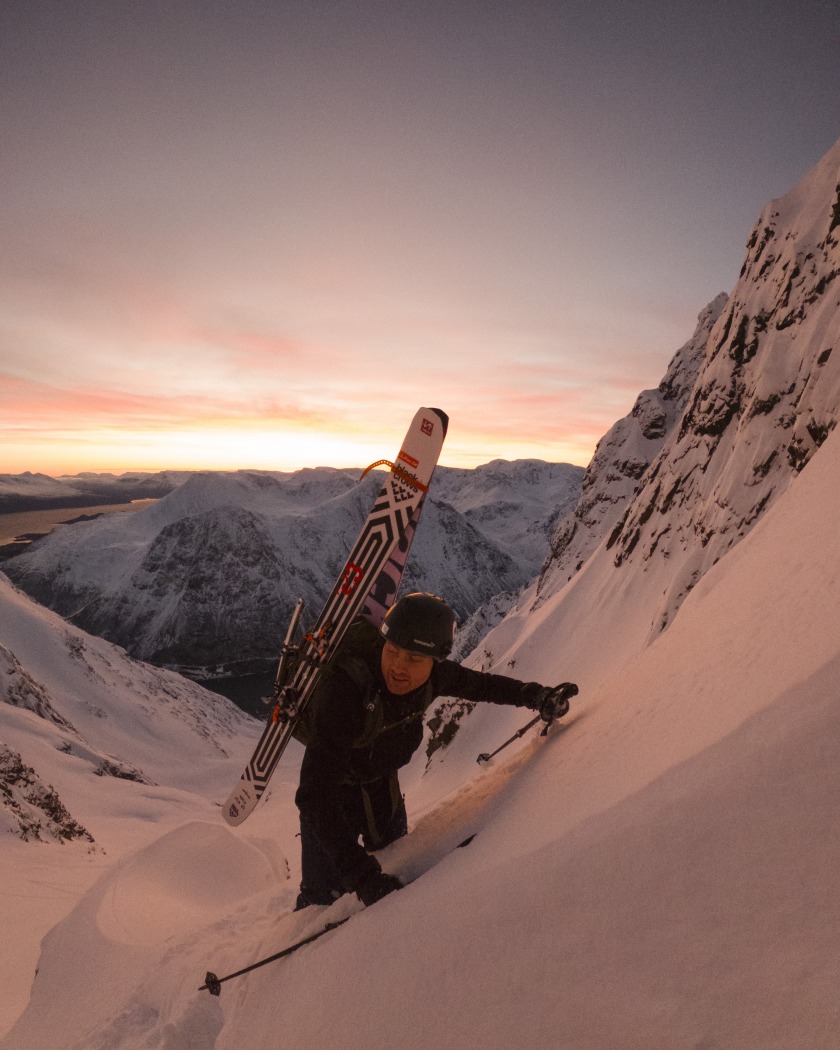
Schirmer poised in his low-light element. Photo: Erik Walle.
I’m not certain how I found Nikolai Schirmer’s YouTube channel. I’m glad I did. His videos and their down-to-earth approach, I’m pretty sure, helped me cope with the pandemic’s restrictions.
Raised in Tromsø, Norway, the thirty-year-old Schirmer is a pro freeskier who is also trained as a lawyer.
As you’ll see in his video series, he is downright Norwegian no matter how he tries to redefine himself as a skier. This means he is used to dark days in winter, maritime snow, and approaches that take him from a fjord’s saltwater to the high alpine. His videos combine a humble and welcoming vibe as he and his friends ascend ridges or couloirs and later arc down some utterly fantastic and scary lines.
Schirmer also artfully allows the landscape and winter light to become characters. After a season of his stories, you almost feel like you know the hills around Tromsø. You get the sense that Schirmer doesn’t seek to conquer mountains, but instead, he chases can-you-believe-we-are-here moments.
This fall, Schirmer will release his longest production to date: WAVY – The Last Voyage of Sofie and Captain Crocs. I connected with Schirmer for a Q & A a few weeks back.
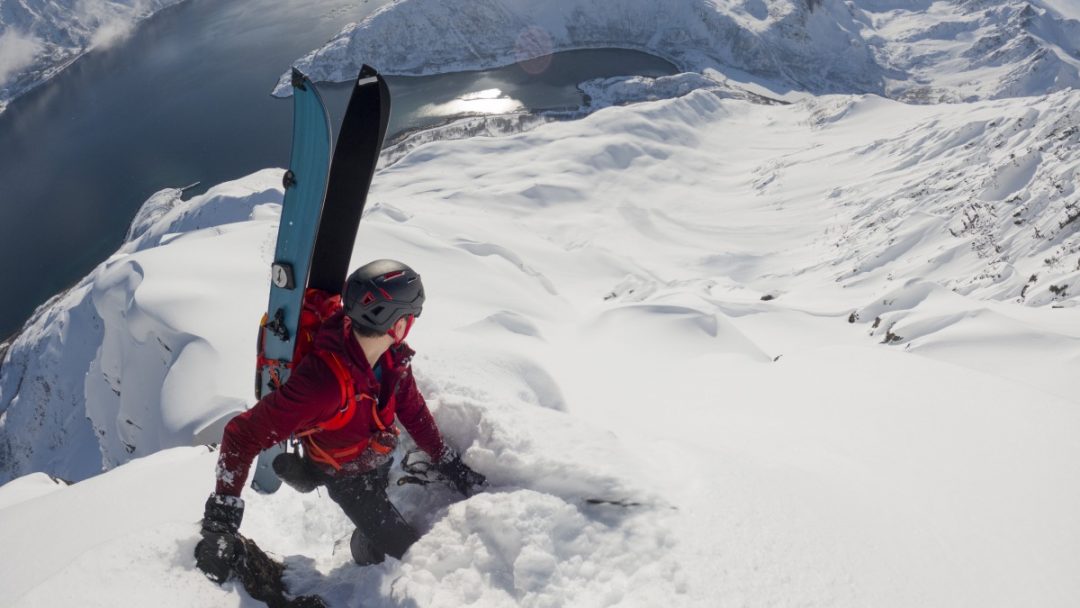
Krister Kopala on a high mountain teetering into the sea during the WAVY shoot. Photo courtesy Nikolai Schrimer/WAVY.
Below is our conversation, which was lightly edited for clarity.
WildSnow: How are you?
Nikolai Schirmer: Not bad, I have the hiccups, and here in Norway, the trick is you got to look at a light. It’s weird. I always thought it was a myth.
WS: How would that work? Adults in Norway tell kids to stare at a lightbulb to stop hiccups?
NS: I’m not sure how it works, but if you try it, to look at a light bulb or something, you know, it kind of stops.
WildSnow: I try to meditate on it, to stop the hiccups – with little effect.
NS: Yeah, meditation is hard. But this, looking at the light, requires no effort.
WS: Full disclosure here, I had never heard of you before Covid. I’m not watching the full complement of ski videos, then with Covid and lots of home time, well, you know how that goes. Honestly, those videos of yours resonated with me. Ski media often falls into the trap of the music, the steep line, the deep powder, that’s it. For me, I think your videos have a pretty distinct narrative arc to them. Sure, skiing is a highlight, but I feel like we get to know you, get to know your partners too, and become familiar with some of Norway’s mountains. The landscape itself becomes a character.
NS: That’s good that I was some of your Covid entertainment. I’m grateful, and I’m sure my sponsors are too, but I’m happy it worked for you. It’s funny because I had the same journey making ski films. When I started making films, it was about documenting just the skiing. But then you do that for a few years, and then you get bored. Because it is boring after a while, like the first few videos you make where you like you could see in clips to music, and you feel that magic of like be and the stops and turns and all that it’s cool. But then you do that a few times, and you’re like, Okay, there’s nothing new happening here. And then I was like, okay, but stories are happening, and especially with my personal friends and going into the backcountry, and skiing more around Norway, where, you know, the snow is worse, but you can ski spectacularly. I also realized the stuff that was happening when we weren’t filming, you know, the way to the ski line, skiing, crampons and tools, and all the drama. I realized there’s so much drama on the mountain that we tend to skip over in most ski films.
So it became more of trying to figure out what the snow is doing, just trying to bring people out there and feel what we’re feeling, not to create some different feeling that wasn’t actually there.
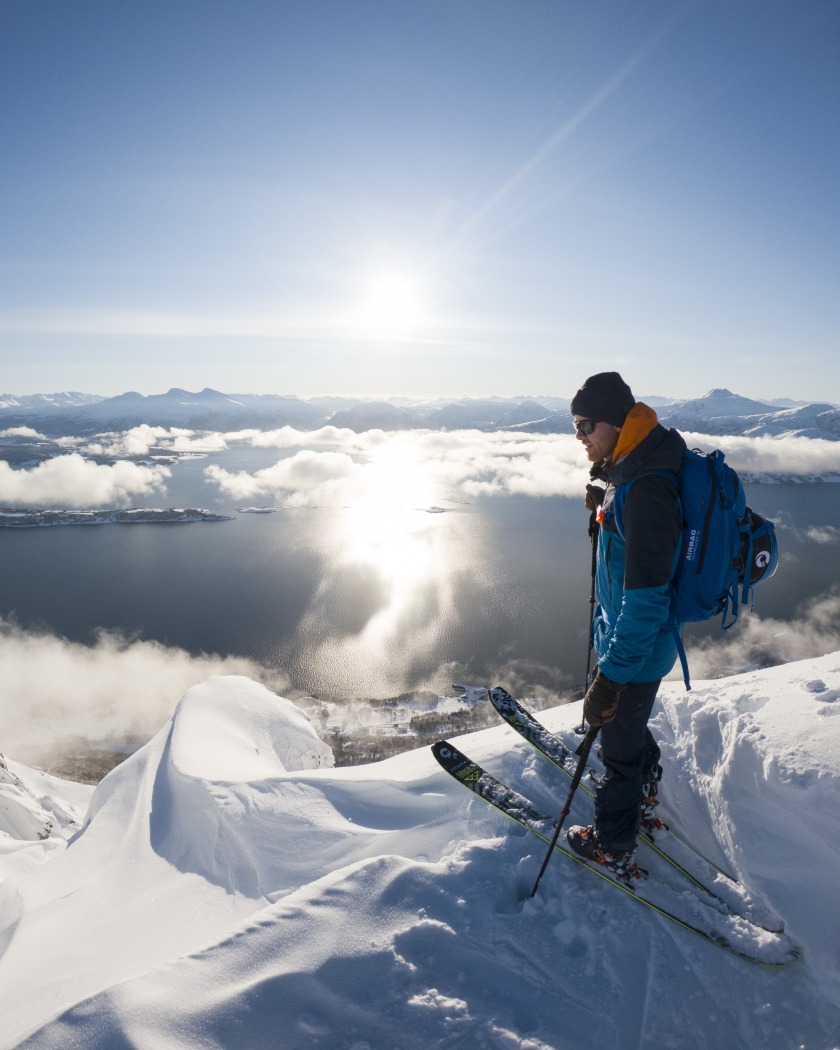
Sunshine greets Schirmer in Northern Norway. Photo courtesy Nikolai Schrimer/WAVY.
WS: Your films are funny in many ways – we get to see you figure out who you are as a skier. You’re self-deprecating; you’re not afraid to poke fun at yourself – I’m thinking of when you discussed earning the lowest score on your law school exam.
Also, part of the fun saw you experiment: are you the sled-head drilling a snowmachine deep into the backcountry and skiing pillow lines and then returning to your big Canadian style pickup truck? Are you the alpinist in Chamonix, the sidecountry guy in Jackson Hole, or the relative purist in your home mountains of northern Norway? There were many looks to your ski persona, and we rode along with you as you settled into Covid and dark-winter Norway. It’s a sweet, eclectic feel. To bring this up again, most of the time, at least for me, the videos deviate from the typical ski film plots: helis, spines, and of course, the nod to human powdered skiing with a skinning scene.
NS: To comment on the whole ski film genre. Two things happened simultaneously in the past 10 to 15 years that made it harder to make good ski films. One was that the progression stagnated. Up to 2010, I felt like you just got your mind blown every year watching the latest movie. The other thing that stopped the progression was that other skiers came along and did something so much better. After Sean Pettit, for example, you know, the one and only, it took five years for people to even catch up to him. People now are still pushing it a bit further, maybe, but it took a while. And it’s going slowly.
So it’s not as mind-blowing to watch ski films every year. And I think the other part was that traditional “ski porn”, the format is the same as a good Instagram feed. It’s the same thing that you’re doing when you’re scrolling Instagram. And I think, in a way, Instagram is better for conveying that; because it’s cool to watch a cool ski clip for five seconds, and you don’t want to watch it for an hour.
But for those kinds of movies, we didn’t have Instagram. So we watched.
I think those factors that I mentioned have made it hard to create compelling content.
I’ve never been the best skier. I won European skier of the year, but in that film, I think I did a few 360s. I acknowledge that I’m a good skier. But I’ve never considered myself the best. Now in my marketing pitch for a potential film or series, I say I’m going to tell stories, which also takes the pressure off me to perform.
WS: How have you navigated the pressure to perform and film but not necessarily put yourself in danger when it comes to snow conditions?
NS: I want to ski in a way that’s relevant for the public. And I want to ski at the highest level I’m able to. But yeah, I think the way I work puts less pressure on the performance than traditional film productions. I’ve been in tons of bad situations, especially safety-wise, when thinking about the pressure to make films. And that’s been something I’ve also been working on the past few years; to structure my winter in a way where if there is an entire month or two months where I can’t do anything significant due to poor snow conditions, then that’s okay. I need to have my production set-up flexible so that there’s no single week where something needs to happen.
When it’s a bomber day, and you know for sure the snow will stick, you’re like, sweet, this is the dream. Then there are all those days where you’re like, okay, I’m pretty sure it’s safe, but I’m not 100% sure. Then it’s just terrifying.
WS: You have also skewed into geopolitics with commentary on climate change and wealth distribution during your video series. Have you received any pushback from your main sponsors?
NS: No pushback from my sponsors. They genuinely love what I’m doing, and they’re very supportive. And, honestly, even when I’m touching on politically sensitive subjects, like inequality, no pushback. One of the companies I work with is owned by one super-rich dude, and I’m here making that video series basically about how that guy should not be rich.
I haven’t heard anything, and no one said anything about that. And generally, they’re into it. And I think my sponsors appreciate good entertainment. And that’s what I try to do, make good entertainment.
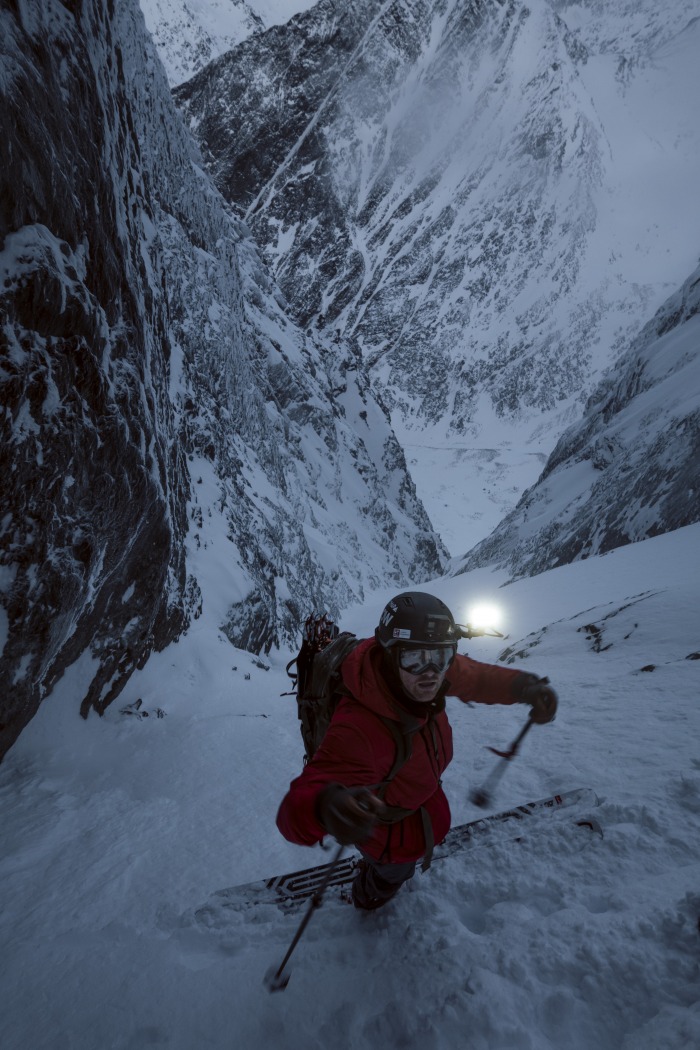
Vital to Norway’s Nikolai Schirmer, a headlamp and steep skiing. Photo: Krister Kopala
WS: Let’s talk about style. For me, you are venturing into the mountains in a certain way or a particular style. There are few if any motors, maybe way back in your early episodes, like in Canada, there were some big sleds. But your scene seems simple; you skin in with friends, you film the ascent, you capture the conversation, the humor, the nerves, and then you all descend. Beyond perhaps the lines you are skiing, the style is relatable.
NS: Thank you for bringing that up. I think that’s interesting in skiing. We talk about style in skiing as simply how your body moves through space, or on the snow, through the air, and what you wear; there’s a lot of focus on that.
I love the concept of style in climbing, where style is how you approach the whole mountain, what gear you bring? I know this old Norwegian climber, you know, doing first ascents in Antarctica. He talks about the first time he climbed a major first ascent, and they were using bolts, drilling holes. The next time they went back to Antarctica, on another first ascent, in that time, the evolution of the ethics of climbing had evolved to where it wasn’t okay to drill anymore. He talks about if you do that, do anything to get up something, there’s nothing that’s impossible. It might be impossible for him, but it might not be impossible for future generations.
For the soul of climbing, it’s important to use a style where you maintain the impossible. You let evolution happen, and you don’t destroy the mountain.
In skiing, at least for me, there’s this element that feels like poor style to approach the mountain in a way that is bad for the mountain.
WS: In your films based in Norway, which have a high production value, we don’t see you accessing peaks with a helicopter, which can be very pricey. Can you talk about your style and how you access mountains and get a solid production completed?
NS: I grew up in Northern Norway and my local ski resort with a 300 meter T-bar, on a really good rolling hill. But, we were surrounded by massive, amazing mountains, alpine peaks. Matchstick was there in 2001, with helicopters flying around filming FOCUS. I know there was so much amazing skiing. As a kid, I watched all the ski movies, and I was like, okay, I want to ski spines and drop big cliffs and ski cool mountains, too. How do you do that? I obviously had no heli. So you just walked up there. That’s how you did it. It’s easy.
And the other side of that, too, is that I realized that it was different here in Norway as I became a professional and created content. In the US and Canada and many places, you can fly a heli into the mountains for a commercial product. In Norway, you have to get a special license from the government to film with the helicopter. Or be well connected. I was frustrated because I can’t do what they’re doing, not because I’m not good enough, it’s just because I simply can’t. There’s no way to do it.
I soon realized going low-impact was cooler in a way. I think it’s cooler to do something where anyone can go do the same thing if they want to. I think your achievements in the mountains are more significant the more open they are to other people – walking or skinning; it makes it more available.
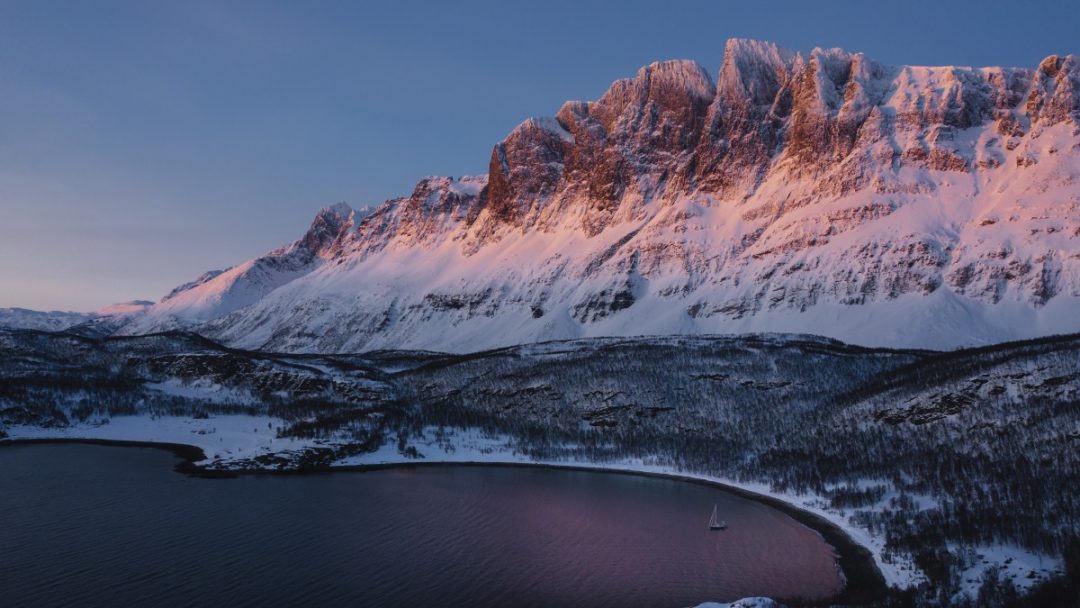
Tucked up into a Norwegian fjord, the team’s sailboat from WAVY positions the skiers for more northern Norway adventure. Photo courtesy Nikolai Schirmer/WAVY
WS: You have your longest film to date coming out this fall titled WAVY: The Last Voyage of Sofia and Captain Crocs. It involves a sailboat, some seasickness, and some great skiing in Norway.
NS: Yeah, it’s the longest movie I have made. It’s from a two-week sailboat trip up to Northern Norway this past March. I went to high school with a guy who bought a sailboat with two buddies. It was this expedition boat that they used to go up to Greenland, and he got frozen into the ice up in the North Pole for two years. So I was like, this is a good boat, I knew the guys, and then we went north.
The objective for the trip was this one mountain range that I had seen ten years ago when I was working on a non-skiing documentary. The mountains were north facing with stripes of snow coming down. And there was this midnight sun, and it was bathed in light, and I had to go back. So ten years later, I get to go back on this boat because that’s the only reasonable way to get there.
But, you’ll see in the film it turns out, the sailboat is good for getting frozen into ice, but that means it’s terrible for sailing because it’s just like a big metal bathtub.
Essentially, I slept terribly for a week or two weeks, and we had the storm of the winter. And what I tell my friends is that if you watch the Lord of the Rings, which is a great movie, you don’t want to be Frodo, you don’t want to live that experience. In a way, I felt like this film was a little bit like his experience, some great things, and some really bad things.
But, it was the coolest terrain I have found in Norway.
WS: Here in the US, there is this saying, don’t let your kids grow up to be cowboys. Many people have co-opted that saying, and by extension, I can hear some parents say or think, don’t let your kids grow up to be professional freeskiers. You attended and graduated from law school. What was that like with your parents when you explained that the law wasn’t for you, you were going to make a go at it as a professional skier and filmmaker?
NS: I have a supportive family. Both my parents are professionals. And I never really questioned university or college. That was just a given. Also, it’s easier to do that in Norway because the government pays you to go to college. I wasn’t a pro skier in my teenage years that began later in my 20s. So when I started law school, I wasn’t giving up on anything. My parents always just kind of accepted skiing as long as I was in law school.
So there was never really anything for them to like object against, you know, okay, I’m in law school and a pro skier. So, by the time I got out, I was already making more money than I would have as a junior lawyer, so it wasn’t like a big deal. I’ve been very fortunate the whole way.
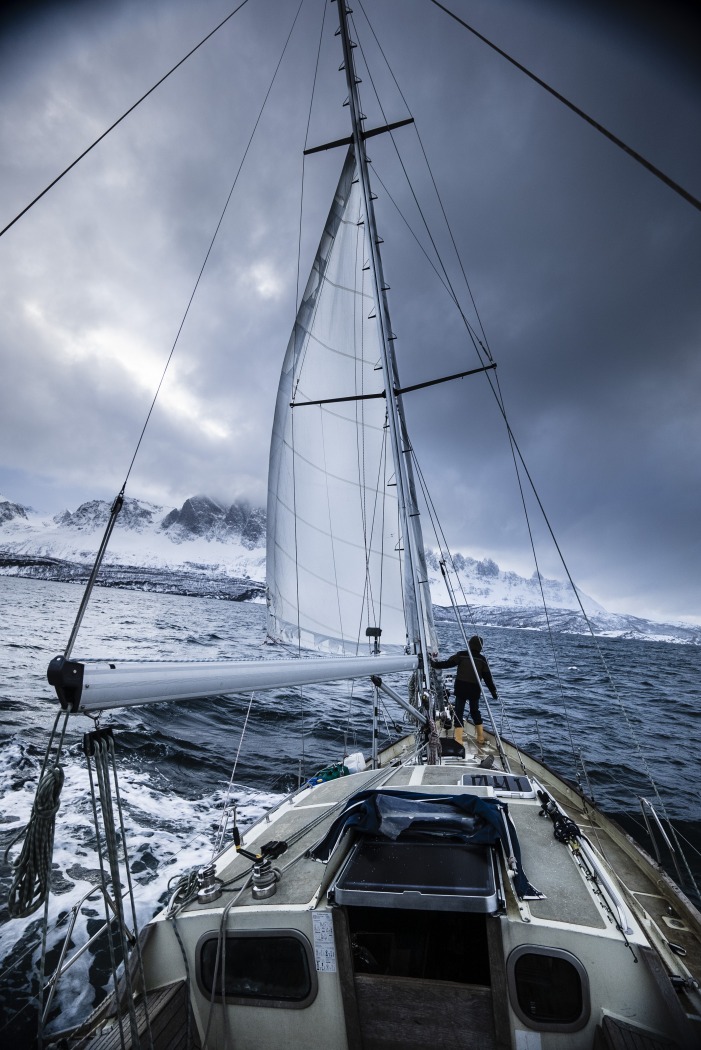
Sea sickness and ski turns were all documented by Schirmer’s crew in WAVY. Photo: Courtesy Nikolai Schirmer/WAVY.
Jason Albert comes to WildSnow from Bend, Oregon. After growing up on the East Coast, he migrated from Montana to Colorado and settled in Oregon. Simple pleasures are quiet and long days touring. His gray hair might stem from his first Grand Traverse in 2000 when rented leather boots and 210cm skis were not the speed weapons he had hoped for. Jason survived the transition from free-heel kool-aid drinker to faster and lighter (think AT), and safer, are better.
